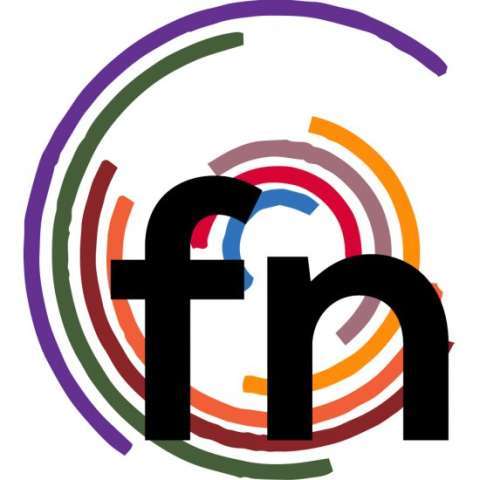Safety is key to a safe and enjoyable festival, highlighting the importance of reviewing safety initiatives ahead of any summer festival this year. For instance, new safety and security rules have been instituted for the 2024 Fairport Mardi Gras in Ohio, with the goal of preventing rowdy behavior. For first-time festival facilitators or seasoned coordinators who wish to conduct a comprehensive review of event plans well in advance, managing common safety concerns in relation to festival infrastructure is a great place to start. From the value of a simple yet effective layout to how a comprehensive plan can go a long way, there are several basics that should never be ignored.
The power of a proper layout
The layout of a festival may seem secondary to the vendors or talent that will be present, though it can play a key role when it comes to putting on a safe event. In addition to selling less tickets than the maximum capacity of the venue, it's important to lay out the event in such a way that prevents issues like overcrowding. This involves designated pathways in addition to entrances and exits, while barriers can help facilitate clear separation between various areas. One Culted article points out that the easiest way to make a festival more inclusive is to "stop overselling spaces and allocating square footage estimates to guests like factor farmers do to cattle." To do so effectively, it's noted that facilities, services, emergency response plans, security briefs and crowd distribution schemes should reflect the diversity of the fans that are attending the event. In addition to the proper layout, ample signage and the consistent presence of event staff will further help avoid overcrowded areas of the festival.
The events of Astroworld back in 2021 are an extreme example of what can happen when an event is seriously overcrowded (and far too rowdy), though it's imperative to keep in mind that incidents involving festival infrastructure can occur under various different circumstances. In 2019, for example, more than two dozen people were injured (none seriously) after a stage barricade collapsed during the Bumbershoot festival in Seattle, Washington. The incident involved the collapse of a four-foot-high steel barricade after many individuals were pushing up against the structure, causing it to fall, according to Seattle Fire Department spokesman David Cuerpo. Through the allocation of ample space and strategically placed event staff, signs, barricades, and security, festivals can avoid injury in smart and safe ways.
Successfully managing cords and wires
Cords and wiring are often an integral aspect to music festivals, and especially so when power is needed in a remote or outdoor location. One of the biggest concerns is people tripping over the wiring, though there are ways to mitigate this risk. Trinity Power highlights Garett Lumley, owner of Down to the Wire, an electrical contractor and mastermind behind the stages, lights, and art installations of the Shambhala Music Festival. According to Lumley, the risks associated with electrical cables can be solved in an innovative way. "Everything's underground," he says. "We'll put a little trench in there about half a foot wide by half a foot deep, put the wires in there and then backfill it, so it looks like we were never there." After the festival is over and the infrastructure is no longer needed, the wires are then pulled up. While underground trenches can be a great way to manage cables for larger outdoor festivals, it's important to keep in mind that this isn't the only aspect of electrical infrastructure that requires special attention. For instance, festival facilitators will need to enlist the help of a licensed electrician in order to prevent common but deadly issues, such as overloading the electrical system, and special care must be given when it comes to electrical infrastructure and the prospects of inclement weather.
The importance of a comprehensive plan
A comprehensive plan regarding the logistics of an upcoming festival is imperative to a smooth and well-functioning event, and is key when it comes to the considerations of festival infrastructure. The importance of an organized plan can be drawn from various music festivals of the past, from the disastrous Woodstock festival of 1999 to the Fyre festival of 2017. While Woodstock '99 featured issues such as poor sanitation and overpriced concessions (in addition to numerous other issues). Fyre festival, on the other hand, is remembered for its lack of infrastructure altogether despite being advertised as a luxury festival on a small island in the Bahamas. "It had ZERO infrastructure," one Forbes post by Richard Howells points out. "Everything, and I mean EVERYTHING needed to be brought to the island, from portable toilets to basic supplies like water." This resulted in a logistical catastrophe, which included high costs — not to mention the numerous other issues that resulted in the festival's downfall. To further highlight the lack of infrastructure, the band set to headline the festival, Blink-182, dropped and announced on social media that the group wasn't confident that they would have what was needed to put on a good performance.
When planning a festival, hiring reputable and professional individuals is a must. While professional security will be well-equipped with the knowledge needed to protect talent and attendees, experienced contractors are ideal when looking for those who can build quality props and physical infrastructure. With that in mind, those who specialize in construction do face a number of risks while on the job, from carrying heavy loads to repetitive motions. The types of injuries that these workers are likely to face include repetitive motion and strain injuries, overuse syndrome, and regional musculoskeletal disorders (to highlight a few), underlining the value in proper technique as well as correct practices. For example, there are several fitness practices that are key in avoiding injury while on the job — good posture and a healthy fitness routine, for example, will help minimize strains and pulls with the help of stretching. Smart practices (such as team lifting objects that may be too heavy) can also help contractors avoid injury, too, further bringing to light the value of an experienced professional.
A festival can appear like a straightforward event, though it's important to plan carefully — especially when factoring in the infrastructure needed for success. From the value of experienced individuals on the job to a comprehensive plan in regard to festival layout and electrical elements, event facilitators will be able to hone in on aspects that have been skimped out on in the past.


